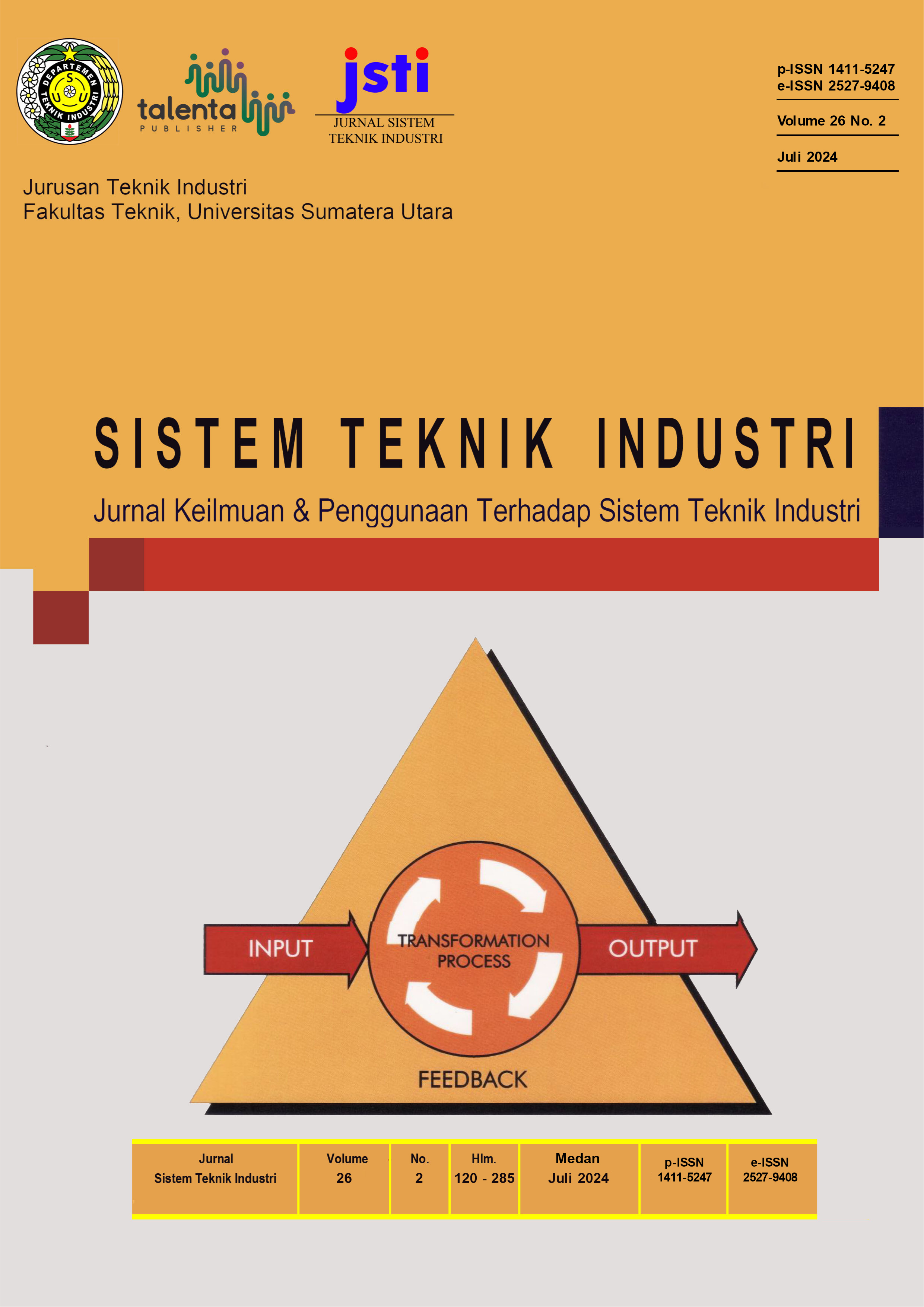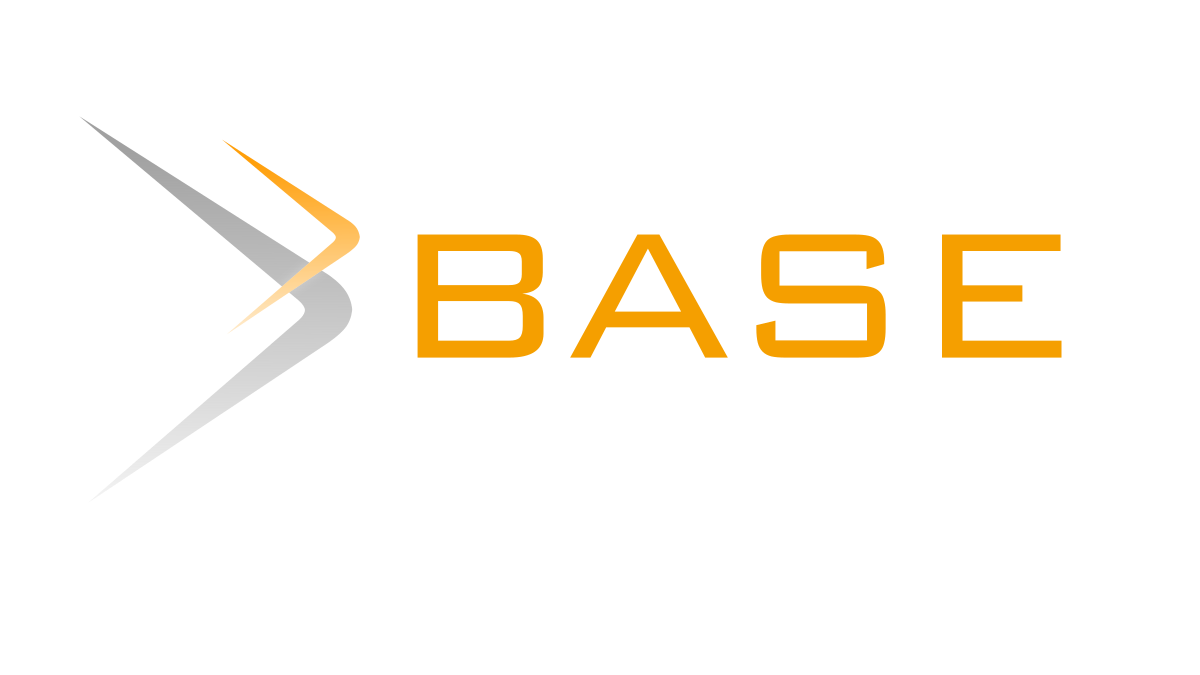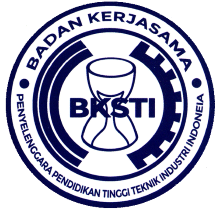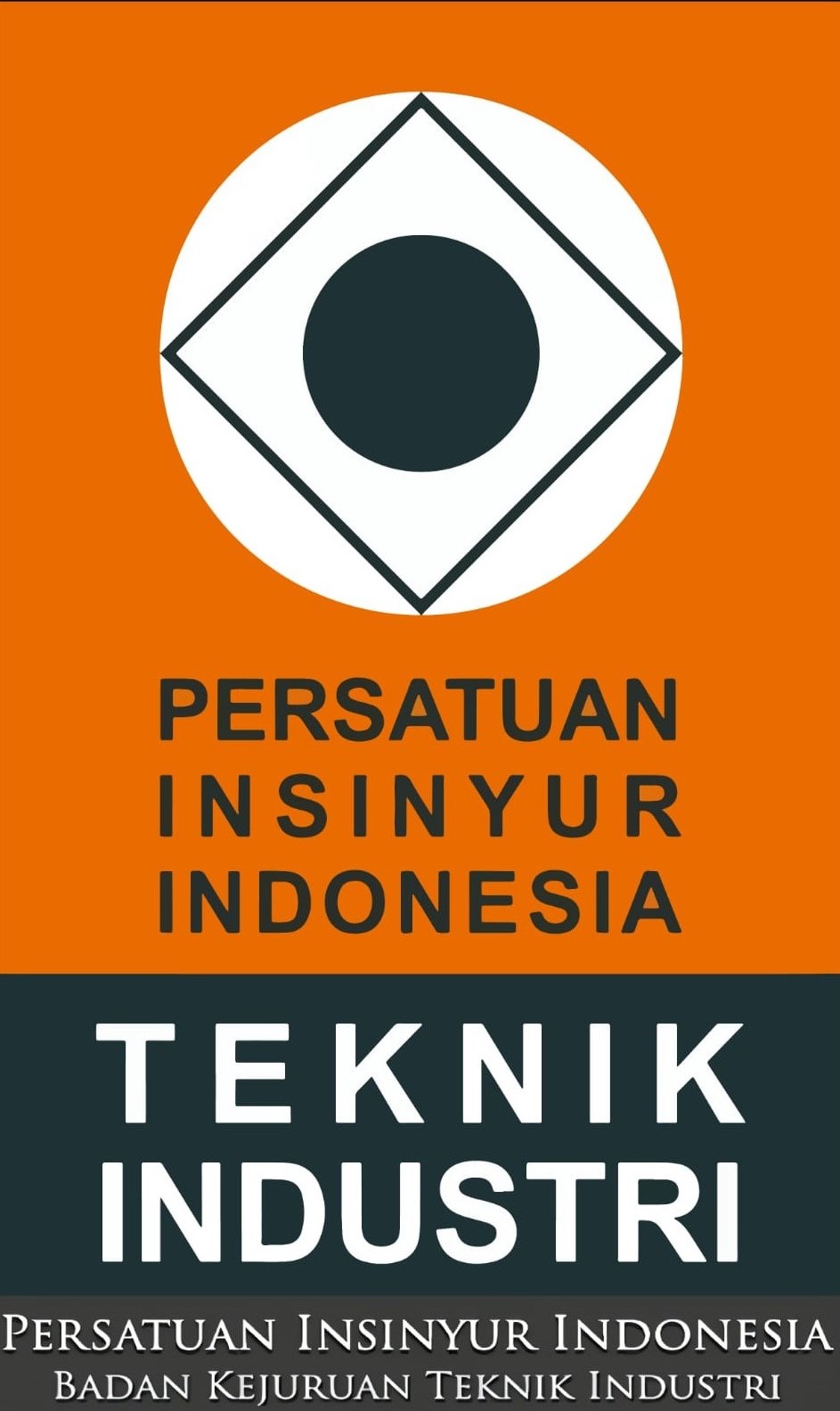Analysis of the Queuing System in XYZ Food Industry in Batam City (Case Study of Queuing Time Observation)
DOI:
https://doi.org/10.32734/jsti.v26i2.16688Keywords:
Batam, Fast-food Restaurant, Queuing Analysis, Queuing TheoryAbstract
This study analyzes the queuing system at XYZ fast food restaurant in Batam City to improve service efficiency and customer satisfaction. Observations were conducted over eight hours on Saturday, April 6th, 2024, from 2:00 PM to 10:00 PM. Data collected included arrival patterns, service time, and customer wait time. Using the queuing model [M/G/2/FIFO/4/∞], it was found that two servers are optimal. The average customer wait time in the system is 4.938 minutes, which is lower than the customer's aspirational wait time of 10 minutes. The system's utility reached 84.33%, indicating sufficient efficiency. Practical recommendations for XYZ fast food restaurant management are to maintain two servers to reduce wait time and increase customer satisfaction.
Downloads
References
D. A. Putera, “Pengendalian Persediaan Beras Menggunakan Pendekatan Sistem Dinamis Di Perum Bulog Divre Sumut,†Universitas Sumatera Utara, Medan, 2021. [Online]. Available: https://repositori.usu.ac.id/handle/123456789/47744
D. A. Putera, A. A. Dermawan, W. Ilham, and R. O. P. Rini, “PENGUKURAN KINERJA PERUSAHAAN DENGAN OBJECTIVE MATRIX (OMAX) PADA PT.XYZ,†J. Manaj. Rekayasa dan Inov. Bisnis, vol. 1, no. 1, pp. 21–33, 2022.
G. Wu, Z. Xu, H. Zhang, S. Shen, and S. Yu, “Multi-agent DRL for joint completion delay and energy consumption with queuing theory in MEC-based IIoT,†J. Parallel Distrib. Comput., vol. 176, pp. 80–94, 2023, doi: https://doi.org/10.1016/j.jpdc.2023.02.008.
B. Uysal, M. Yorulmaz, and M. Demirkıran, “Evaluation of outstanding theories in outsourcing with practices in the public health sector: The case of Türkiye,†Heliyon, vol. 10, no. 7, p. e28773, 2024, doi: https://doi.org/10.1016/j.heliyon.2024.e28773.
A. B. Santos, R. D. Calado, A. C. S. Zeferino, and S. C. Bourguignon, “Queuing Theory: Contributions and Applications in the Field of Health Service Management – A Bibliometric Approach,†IFAC-PapersOnLine, vol. 55, no. 10, pp. 210–214, 2022, doi: https://doi.org/10.1016/j.ifacol.2022.09.392.
H. Pourvaziri, H. Sarhadi, N. Azad, H. Afshari, and M. Taghavi, “Planning of electric vehicle charging stations: An integrated deep learning and queueing theory approach,†Transp. Res. Part E Logist. Transp. Rev., vol. 186, p. 103568, 2024, doi: https://doi.org/10.1016/j.tre.2024.103568.
K. Abdulaziz Alnowibet, A. Khireldin, M. Abdelawwad, and A. Wagdy Mohamed, “Airport terminal building capacity evaluation using queuing system,†Alexandria Eng. J., vol. 61, no. 12, pp. 10109–10118, 2022, doi: https://doi.org/10.1016/j.aej.2022.03.055.
Q. Wang and A. R. Thelkar, “A novel stackelberg game-theoretic optimization model for interaction between two closed-loop supply chains with a queueing approach,†J. Eng. Res., 2024, doi: https://doi.org/10.1016/j.jer.2024.01.021.
J. Yao, Y. Chen, A. Chen, and Z. Liu, “Modeling link capacity constraints with physical queuing and toll in the bi-modal mixed road network including bus and car modes,†Transp. Res. Part E Logist. Transp. Rev., vol. 184, p. 103486, 2024, doi: https://doi.org/10.1016/j.tre.2024.103486.
S. Mirchevski and V. Bakeva, “Cost function analysis of a single-server queueing system with Poisson input stream and Erlang-k service time,†Appl. Math. Comput., vol. 475, p. 128729, 2024, doi: https://doi.org/10.1016/j.amc.2024.128729.
A. P. Iannoni and R. Morabito, “A review on hypercube queuing model’s extensions for practical applications,†Socioecon. Plann. Sci., vol. 89, p. 101677, 2023, doi: https://doi.org/10.1016/j.seps.2023.101677.
C.-H. Laih, Y.-F. Chuang, R.-C. Wang, and P.-Y. Sun, “Development of an adjustable step toll scheme in compliance with expected effects of queuing reduction for the Suez Canal,†Res. Transp. Bus. Manag., vol. 44, p. 100717, 2022, doi: https://doi.org/10.1016/j.rtbm.2021.100717.
M. Ma, J. Szavits-Nossan, A. Singh, and R. Grima, “Analysis of a detailed multi-stage model of stochastic gene expression using queueing theory and model reduction,†Math. Biosci., vol. 373, p. 109204, 2024, doi: https://doi.org/10.1016/j.mbs.2024.109204.
D. A. Putera, A. A. Dermawan, D. E. Kurniawan, A. W. Aranski, and R. Dio, “Design of an Arduino Mega-Based Walking Cane Assistive Device to Improve the Quality of Life for the Elderly in the Riau Islands Province,†Sci. J. Informatics, vol. 10, no. 4, pp. 499–512, 2023, doi: 10.15294/sji.v10i4.47793.
D. A. Putera, R. O. Puspita Rini, A. A. Dermawan, W. Ilham, and T. Mulyadi, “Perancangan Gudang PT. XYZ Dengan Metode Class Based Storage Untuk Meminimalisir Jarak Material Handling,†Sigma Tek., vol. 6, no. 2, pp. 278–289, 2023, doi: 10.33373/sigmateknika.v6i2.5522.
A. A. Bouchentouf, L. Yahiaoui, and I. Ziad, “Modeling and optimizing an AMS with DV policy, waiting servers, impatient customers, and failures: A queueing analysis,†Results Control Optim., vol. 15, p. 100427, 2024, doi: https://doi.org/10.1016/j.rico.2024.100427.
D. A. Putera, A. R. Matondang, and M. T. Sembiring, “Rice distribution planning using distribution resources planning (DRP) method,†AIP Conf. Proc., vol. 2471, no. 1, pp. 060002-1-060002–6, 2023, doi: https://doi.org/10.1063/5.0129254.
M. Tyagi et al., “Impact of application of queuing theory on operational efficiency of patient registration,†Med. J. Armed Forces India, vol. 79, no. 3, pp. 300–308, 2023, doi: https://doi.org/10.1016/j.mjafi.2021.06.028.
J. Rios, D. Morillo-Torres, A. Olmedo, J. Coronado-Hernandez, and G. Gatica, “Pricing for urban areas using queuing theory,†Procedia Comput. Sci., vol. 203, pp. 554–558, 2022, doi: https://doi.org/10.1016/j.procs.2022.07.079.
W. Jia, Y. Huang, Q. Zhao, and Y. Qi, “Modeling taxi drivers’ decisions at airport based on queueing theory,†Res. Transp. Econ., vol. 92, p. 101093, 2022, doi: https://doi.org/10.1016/j.retrec.2021.101093.
I. Keramidi, D. Uzunidis, I. Moscholios, M. Logothetis, and P. Sarigiannidis, “Analytical modelling of a vehicular ad hoc network using queueing theory models and the notion of channel availability,†AEU - Int. J. Electron. Commun., vol. 170, p. 154811, 2023, doi: https://doi.org/10.1016/j.aeue.2023.154811.
Downloads
Published
How to Cite
Issue
Section
License
Copyright (c) 2024 TALENTA Publisher Universitas Sumatera Utara

This work is licensed under a Creative Commons Attribution-ShareAlike 4.0 International License.
The Authors submitting a manuscript do so on the understanding that if accepted for publication, the copyright of the article shall be assigned to TALENTA Publisher Universitas Sumatera Utara as the publisher of the journal.
Copyright encompasses the rights to reproduce and deliver the article in all forms and media. The reproduction of any part of this journal, its storage in databases, and its transmission by any form or medium will be allowed.



















